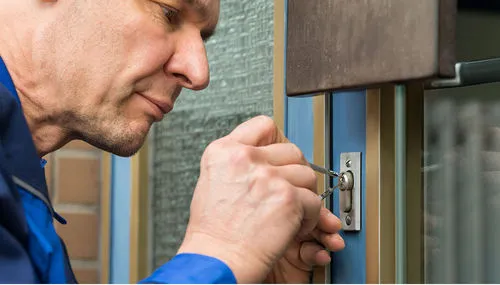
Key Stuck In Euro Cylinder Lock? (Try This!)
Ugh, getting a key stuck in one of those euro cylinder locks is the worst, am I right? It can totally throw a wrench in your plans for the day.
But don't worry - there are a couple of ways to get it out without having to call in the pros.
In this guide, I'll show you how to remove a key stuck in a euro cylinder lock.
Before we get into more serious methods, let's try the basics first.
Go ahead and give that key a little wiggle back and forth while also gently pulling or pushing on it. Sometimes a bit of movement is all it takes to get that stuck key unstuck.
Also Read: How To Fix A Lock Filled With Super Glue
If wiggling doesn't work, you can try applying a lubricant like WD-40, silicone spray, or a tiny bit of graphite powder directly into the keyhole.
These lubricants can help loosen up the internal workings of the cylinder.
If that didn't do the trick, you have to take that euro cylinder lock out of the door altogether.
There are two main ways you can go about doing this:
Your first option is to break the support pins.
Before you start, you'll want to unscrew the door handle from the door. This will make it easier to access the lock mechanism.
Now find the two pins that hold the protruding part of the cylinder lock in place.
Then use a sturdy pair of pliers or locking pliers to firmly grip the cylinder casing. Apply force by bending it slightly up/down or side-to-side to snap those support pins.
Once broken, you should be able to separate the cylinder into two pieces.
From there, you can open the door, remove the lock's securing screw, and slide out the full lock cylinder (make sure the cam is flush).
The other option is drilling directly through the lock cylinder itself.
Use a 1/8-inch drill bit and drill just below the area where the inner and outer portions of the cylinder meet. This should allow you to drill through and destroy the pin tumblers inside.
As you're drilling, periodically pull the drill bit out and use a small, sharp tool to clear away any remaining pins.
Also Read: Repairing a Broken Door Lock
Once clear, you should be able to rotate the lock with a screwdriver or key to align and remove it.
Modern euro cylinder locks often come with anti-snap and anti-drill features to prevent these kinds of forced entry methods.
But it can still be done with a bit of patience and power.
For anti-snap locks, you'll likely need to apply considerably more force to break it at the designated snap line (usually 1/4 down the length).
If it snaps properly, you may then need to drill out the remaining portion or call a locksmith.
Anti-drill locks obviously make drilling more difficult, but it can still be done slowly and carefully with a quality drill bit.
You’ve to remove the bit frequently to clear away any broken anti-drill pins with a sharp tool
After drilling through, use a flat tool to fully dislodge any remaining pins from the keyway or drilled hole. Tapping the lock body with a hammer can also help dislodge stuck pins.
These methods can definitely work in a lot of cases, but sometimes it's best to call in a professional locksmith for assistance.
Are you not comfortable trying these techniques yourself?
Are you running into a whole lot of resistance?
If the answer is yes to either of these, it's probably a good idea to have a locksmith take a look to avoid causing any serious damage to your door or lock.
Also Read: Do I need to call a locksmith?
The main reason keys get stuck in euro cylinder locks is due to a lack of lubrication.
These lock mechanisms have tiny moving parts inside that need to stay lubricated to function correctly. If they dry out, the pieces can start binding and sticking.
Plus, dust, dirt and grime can build up inside too and cause the pins to seize.
If you have used the lock for a long time, the springs and pins inside the lock can wear down or break altogether.
And of course, a bent or damaged key is just asking for trouble. It won't align properly with the pins inside the cylinder, causing it to get stuck.
Always keep that euro cylinder clean! Regularly brush away any obvious dirt or debris you see accumulating around the keyhole.
Next up, lubrication is key (pun intended).
Every few months, apply a nice lubricant made specifically for locks, or use a multi-purpose one like WD-40 or silicone spray.
Just a few drops into the keyhole is all it takes.
If your lock is getting pretty old and worn down, it's probably time to replace it altogether. Those internal components simply wear out over years of use.
And finally, be gentle! Avoid any harsh yanking or forcing when inserting and removing your keys.
Call Our Emergency Locksmith London team now for a free quote, consultation and advice